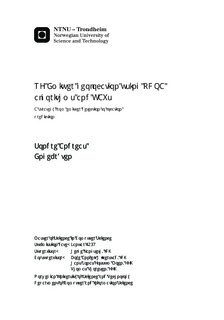| dc.description.abstract | In this thesis, I explored strategies for locating an RF emitter. Expanding on
an idea conceived at Norwegian Defence Research Establishment (FFI), of using
small, cheap RSS sensors and Unmanned Aerial Vehicles (UAVs) to search for
unknown RF emitters. Cheap and simple, will in most cases, mean that some
property of the system suffers, compared to more complicated and expensive
systems. This thesis attempts to circumvent these issues by using multiple sensors
instead of one single larger sensor.
How to best organize and use multiple sensors in a distributed autonomous con-
text is a problem that is complicated, if not impossible, to solve analytically.
Applying artificial intelligence methods to this problem allows for finding good
solutions and strategies while maintaining computational feasibility. The results
of this work outline a strategy from emitter-detection to location-prediction, in-
cluding analysis of trade-offs between accuracy and resource consumption. The
strategy presented here may be implemented in a functional real-world demon-
stration platform, with few modifications, and provides the ground-work for a
cheap, fully autonomous, distributed UAV system for locating unknown RF emit-
ters.
I have found that the marginal gain from adding more UAVs decrease faster
than that from adding more steps (time) per UAV. Furthermore, it is important
to avoid ambiguities. Ambiguities present two or more locations which cannot
be distinguished without a carefully selected formation. Finally, it may not be
possible to optimize this problem fully with the computational capacity available
today. This leads to developing good heuristics, approximate solutions, that
provide sufficient performance. A few such heuristics are presented here, most
notably using an attraction force to model optimized behaviour. | |

